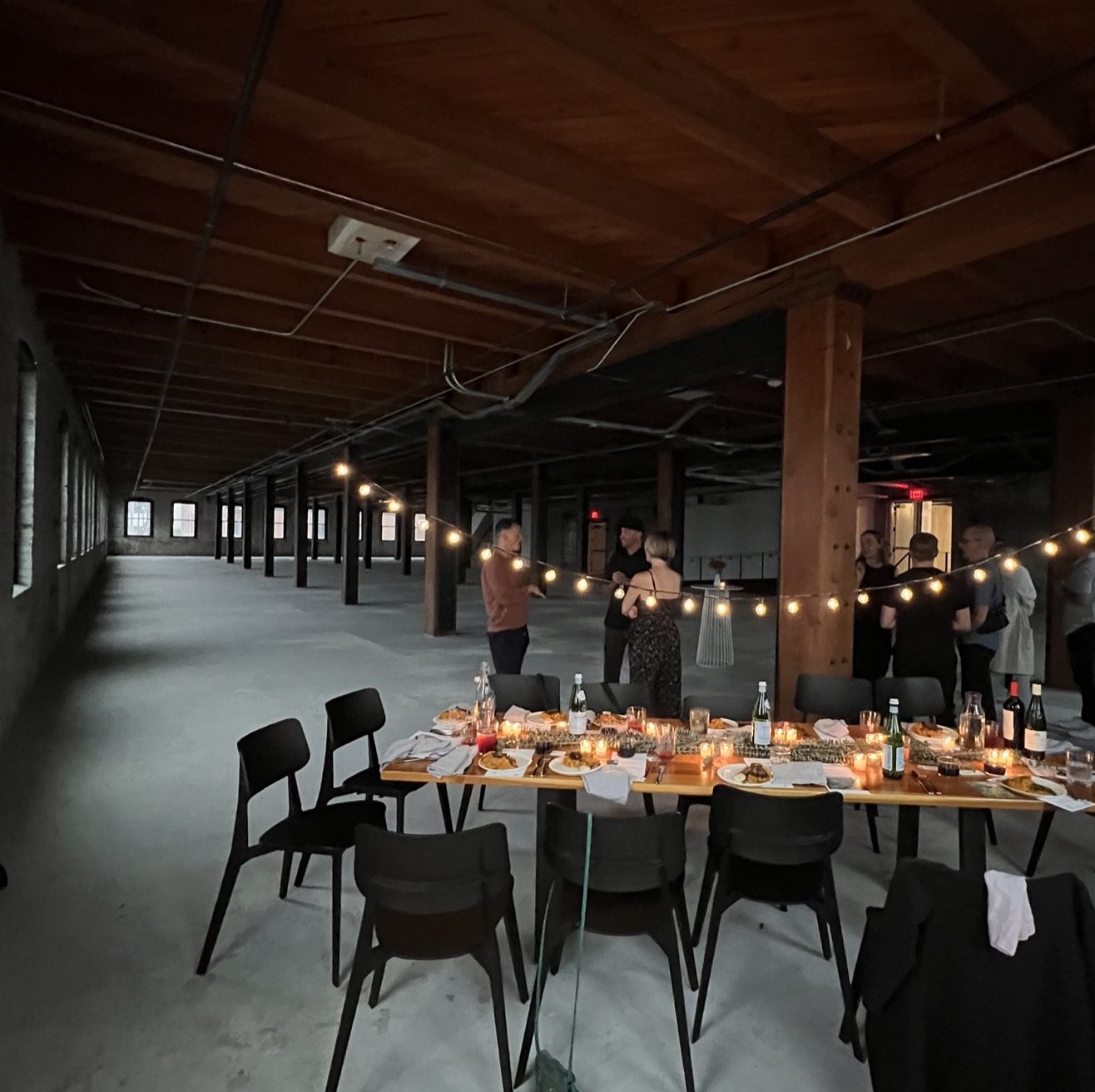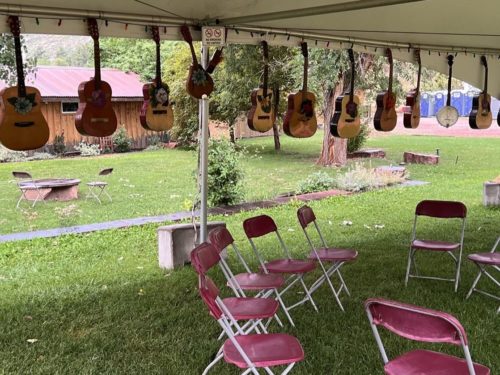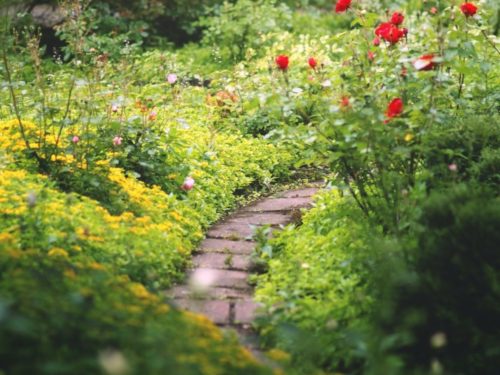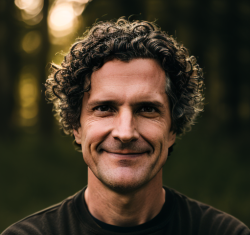
A beautifully designed experience
I recently attended a very different kind of meal. It’s called a Dwell Dinner.
It was a fascinating experiment in human connection. There was a elegantly placed table with an Au Courant multi-course meal stylishly assembled on an unoccupied floor of the Ashton Building at Millwork Commons.
Conversation was intentional, but not prescribed. Connection grew quickly among thoughtful, caring, and interesting people, most of whom started the evening as strangers.
How did this happen?
Exploring space
The dinner’s theme was space, as in “the personal and public spaces we find ourselves drawn to.”
The dinner invitation asked participants to answer a series of questions related to the theme. Each person’s answers were used to create a postcard, which were placed around the table. Over the course of the meal, everyone shared about the image and ideas on their postcard.
The stories were personal and sometimes quite vulnerable. They prompted thoughtful follow-up questions and dialogue. It was beautiful to watch mutuality, admiration, and support emerge among the group in a relatively short period of time.

It got me thinking about the “inner space” we were inhabiting together. Our physical surroundings were cozy, but they couldn’t create such a safe and caring conversation.
This level of connection required people whose inner lives were prepared to be open and intimate. Together, we felt rich in stories, questions, and insights. Our hearts and minds were oriented toward generosity.
It created an elegant aesthetic of the inner life that complemented our external space.
The inner life?
The inner life is the landscape of physical sensations, emotions, thoughts, actions, and beliefs we experience in any moment. I also call these the Five Doorways of Mindfulness. Intuition is also a big part of the inner life.
Often our inner life feels like a jumble of disconnected activity. A pain in our chest seems unrelated to our distracted thoughts, or whatever unpredictable emotion we’re feeling.
We generally assume that our inner experience results from what’s going on around us. If we’re eating cake with friends, we’ll be happy. If we’re sitting in a cubicle next to a jerk, we’ll be sad.
So we organize our lives around getting and doing things that make us feel good.
The problem is, you can’t always get what you want. No matter how lucky, wealthy, healthy, good-looking, funny, smart, or successful we are, we will never live in a state of constant positive external stimulus.
Trying to do so backfires.
The realm of hungry ghosts
If we try, we become hungry ghosts. Unsatiated desires make us ache. We get grumpy and tell ourselves we’re victims. Or we blame our partners, the weather, society, etc.
We end up preoccupied and check our phones every 3 minutes. We’re trying to get at least a little hit of satisfaction.
That creates an inner aesthetic, too. It’s oriented toward lacking and longing. Our inner landscape feels barren. Our minds are driven by scarcity.
That's not who we really are
The truth is, we can cultivate the inner aesthetic we want. It is both ridiculously easy and extremely daunting.
It’s easy because it’s a natural human capacity. You don’t need an advanced degree or a sophisticated meditation practice. You don’t need money. You’ve already done it many times in your life, without anyone telling you how.
It’s daunting because the hungry ghosts in us want SO BADLY to be right. We want our desires to be recognized, validated, and met. We believe that letting go of them means letting go of who we are. This is extremely unsettling and can even be scary.
We don’t have to let go of who we are.
It’s just that our true nature is something different than we think. We are curious, confident, connecting, compassionate, creative, clear, courageous, and calm. These are the “8 Cs” of Internal Family Systems framework. They at the core of our identity.
The key is learning how to access them when we need them most.
What we call the personality is often a jumble of genuine traits and adopted coping styles that do not reflect our true self at all but the loss of it.”
Gabor Maté,
In the Realm of Hungry Ghosts:
Close Encounters with Addiction
The path toward wisdom
As we cultivate wisdom, we learn to proactively create a positive inner aesthetic, regardless of what’s going on around us.
It starts by becoming deeply fluent in your own inner life. No longer just a jumble of sensations, you learn to see the inner patterns that drive you. Physical sensations give rise to predictable emotions, thoughts, actions, and beliefs in certain types of situations. It’s like an algorithm inside you. It creates a habit loop that limits your options.
On the path of wisdom, you learn to change the algorithm and create more beneficial inner “loops.” You learn to live in choice.
The effects are transformative. You feel more grounded and at ease within yourself. Personal relationships grow more intimate. Philanthropic partnerships become less transactional and more high-touch.
Creating psychological space
Therein lies the real genius of the Dwell Dinner organizers. They created a safe, inviting psychological space where we could access our open-hearted nature. The “8 Cs” abounded, especially caring, curiosity, and connection.
That made for a unique shared experience. Together we inhabited a space where the inner aesthetic was characterized by depth, meaning, and fun.
Here’s a simple exercise to try shifting your own psychological space:
- Imagine a challenge you’re experiencing recently.
- Try looking at the situation through the “lens” of each of the 8 Cs. (Again, they are curious, confident, connecting, compassionate, creative, clear, courageous, and calm).
- How are you seeing the situation differently?
Subscribe to my newsletter.
I try to send one per week. But I’m committed to not being mechanistic about it.
Life happens in cycles and so does my newsletter energy.






Your timing is impeccable. I have some inner work to do. Thank you!
Thanks, Carol! I’d love to hear more…I’ll circle back with a time to get coffee again soon.
Take care,
Matt
So interesting Matt. The Inner Life article resonates deeply. Recently at work, I had a pt. whose energy was so heavily negative I wanted to escape it … As I connect honestly with my inner voice, I feel strongly to leave my profession in Nursing! I feel burned out from it now …. I will use the 8 C’s to work through it !!! Thank you
Sounds like you’re at an important crossroads, Laura. A mentor of mine likened these moments to when a substance shifts from one state to another (like a solid to a liquid). All the molecules become activated and create a lot of commotion as they dissemble from their current arrangement. They bounce around until they settle into a new pattern that supports their new form. The 8 Cs are a great way to stay grounded in your “centered self” (as a client of mine once said) during a time of transition like this. Best of luck to you, please keep me posted on how things progress and let me know if I coaching might be helpful to you.